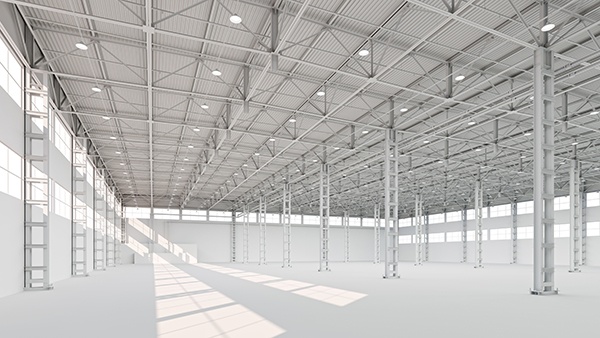
We already shared seven factors that you have ton consider when leasing industrial space, especially if you are used to leasing office space. Here are six more that you are likely either not used to considering or that you may need to look at differently than you usually would.
Building Square Footage
As we already discussed, a space's cubic footage might be a more important metric than its square footage. It is also important to understand exactly how the space is measured. While the rectangular spaces in these buildings are typically simpler to measure than complicated offices, landlords can still find ways to make errors in their own favor.
Nearby Tenants
In industrial space, it can be important to ensure that the nearby tenants are compatible. As in offices, having an adjacent space with an incompatible business can be challenging. In addition, because suitable space that meets all of your company's exact needs can be hard to find, leasing a location where neighbors have the option to expand over you could leave you looking for a replacement space in the future when your lease rolls over or, even worse, leave you without any suitable replacement.
Operating Expenses
It goes without saying that industrial space is usually much less expensive to operate than office or retail space. Furthermore, services like utilities that are frequently billed in common in offices are usually billed separately in industrial space. Another important difference is that certain expense items -- like repairs -- can have a more significant impact on your total occupancy cost in warehouse and similar space. As such, understanding what your exposure can be and how it is calculated is very important.
Maneuvering Space
While you might be used to calculating whether or not a building has enough parking spaces, the standard for industrial properties is different. Typically, the employee-to-space ratio is relatively low, but you may need room for large trucks and trailers to maneuver around the space. If your company receives shipments in 54 to 60 foot trailers, your lot needs to have at least 120 feet of clear space for those trucks to turn around. It should also be configured so that all of the dock doors that you will be using are fully accessible.
Parking
Another expense that can come into play with these spaces is the cost of maintaining and repairing the parking lot. Industrial lots are frequently much larger than office lots and subject to much heavier use, due to the presence of trucks. While it isn't unreasonable to expect that you would bear at least some of your pro-rata share of a building's total cost, buildings with lots in disrepair could come out to be much more expensive than they seem once the repair bills get applied to your OpEx reimbursements.
Zoning and Local Laws
Just because you find a building that suits your needs does not mean that your have the right to conduct your business in that space. While most general office zoning allows just about any type of office-using business to operate from that zone, industrial zoning laws are much more complicated. Inquiring as to permitted uses before you go too far down the line with a given property can save you time and money.
Other Industrial articles to check out:
5 Secrets of Industrial Site Selection
Four Tips for Maximizing Your Industrial Utilization
Seven Must-Considers When Leasing Industrial Space
Subscribe to our blog for more great tips!!








